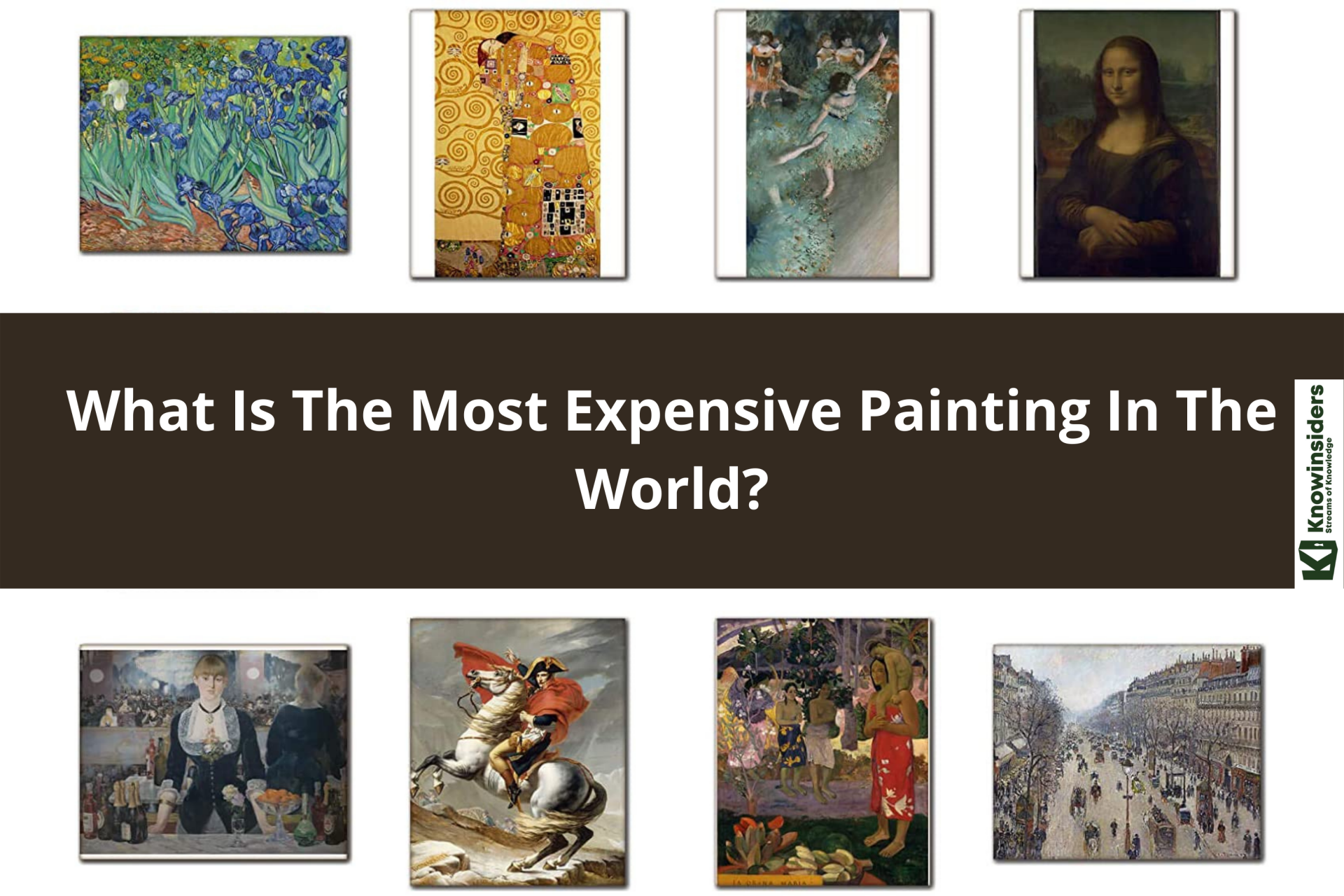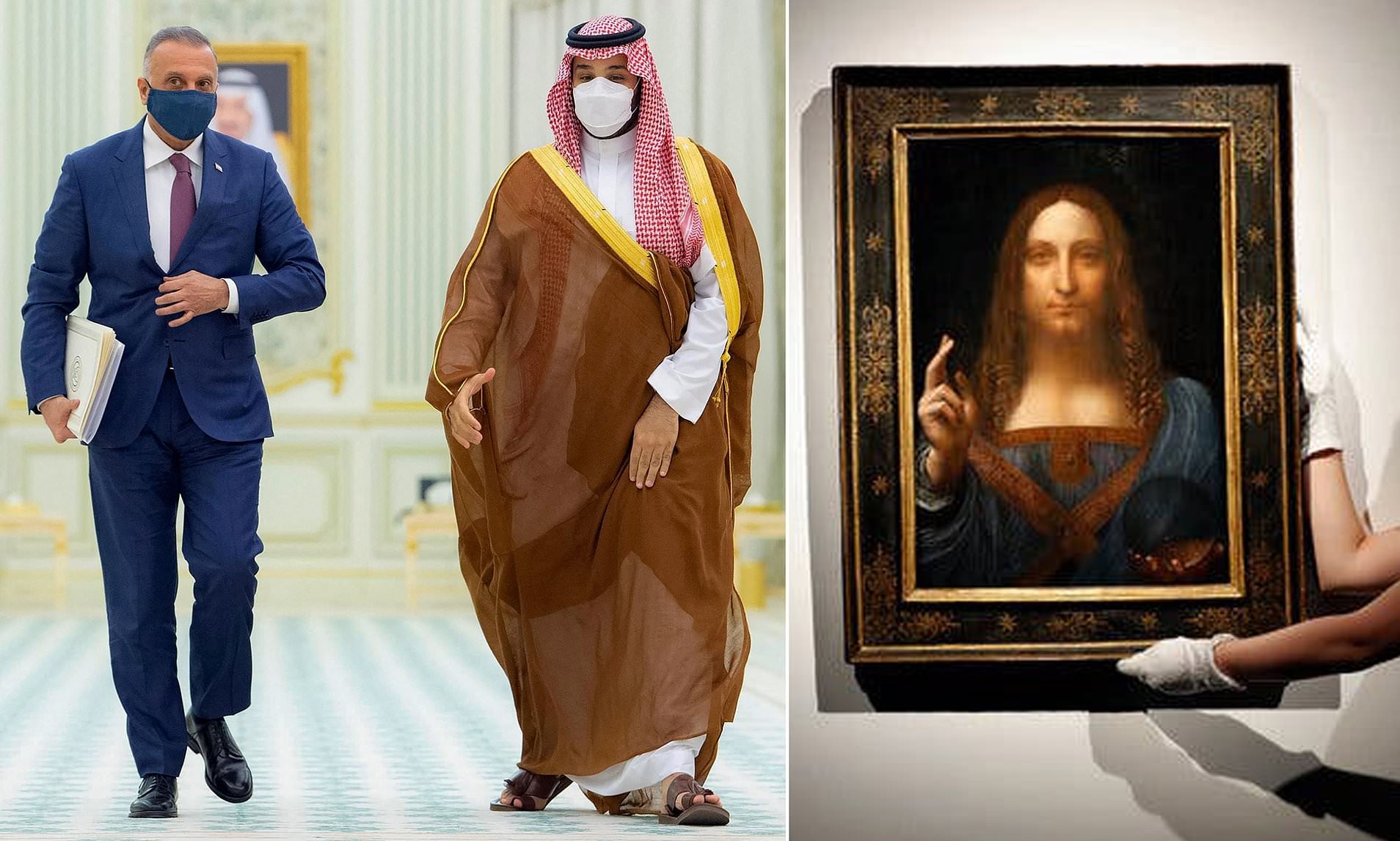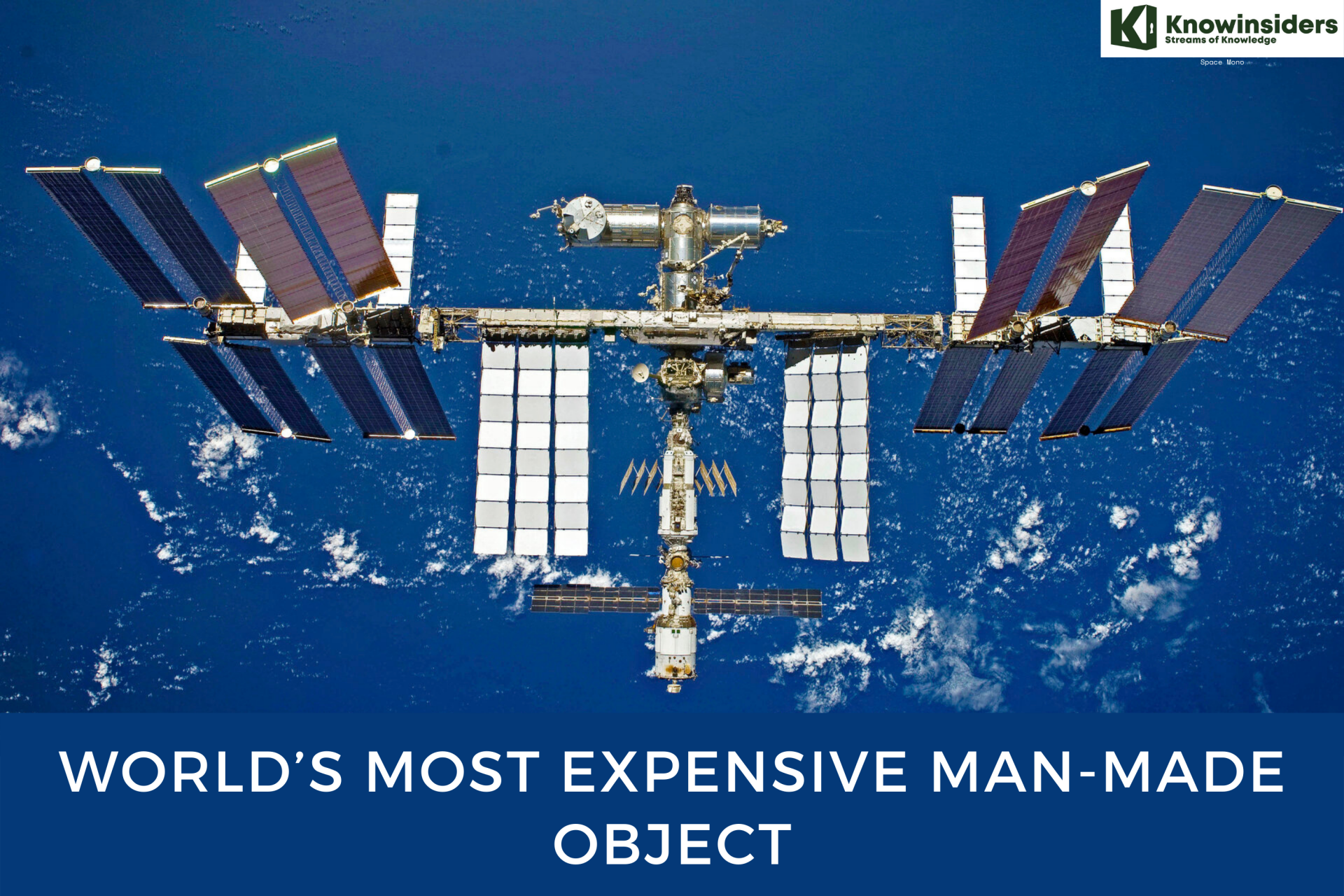Facts About Salvator Mundi - Most Expensive Painting In The World
 |
| What Is The Most Expensive Painting In The World? |
The world’s most expensive painting is Salvator Mundi by Leonardo da Vinci, which sold for $450,312,500 (£343 million), including buyer's premium, at an auction held by Christie's in New York, USA, on 15 November 2017. The mystery of why the Salvator Mundi, the world’s most expensive painting, didn’t appear at the blockbuster 2019 Leonardo da Vinci show at the Louvre in Paris is unraveled in a new documentary, set to premiere on French television on April 13.
What is Salvator Mundi?
Leonardo paints Salvator Mundi possibly for King Louis XII of France and his consort, Anne of Brittany. It is most likely commissioned soon after the conquests of Milan and Genoa.
The 26-inch haunting oil-on-panel painting depicts a half-length figure of Christ as Savior of the World, facing front and dressed in Renaissance-era robes. In his painting, Leonardo presents Christ as he is characterized in the Gospel of John 4:14: 'And we have seen and testify that the Father has sent his Son as the Saviour of the World.' Christ gazes fixedly at the spectator, lightly bearded with auburn ringlets, holding a crystal sphere in his left hand and offering benediction with his right.
Salvator Mundi was at once time believed to have been destroyed. The painting disappeared from 1763 until 1900 when it was bought by Sir Charles Robinson as a work by Bernardino Luini, a follower of Leonardo. It next appeared at a Sotheby's in England in 1958 where it sold for £45 - about $125 at the time. It then disappeared again until it was bought at a small U.S. auction house in 2005.
Like many of Leonardo's surviving works, the painting was not in mint condition when it resurfaced in the early 2000s. It required extensive restoration. Even though there are some respected experts on Renaissance art who question the attribution of the painting to Leonardo, it was sold at auction at Christie's in New York in November 2017 for $450,312,500, a new record price for an artwork. The purchaser was not disclosed.
The History of Leonardo's Lost Painting, "Salvator Mundi"
 |
| Photo: vietbao |
Possession for Kings and Queens
Believed to have been commissioned around 1500, Leonardo da Vinci’s Salvator Mundi was painted for either King Louis XII of France or his consort, Anne of Brittany. And in 1625, when Henrietta Maria of France married King Charles I of England who was known to be the most prominent art collector of his age, the painting found its way to England where it remained in the Queen’s Greenwich Palace private chambers.
Czech etcher Václav Hollar known as Wenceslaus in England was one of the most prolific artists of his time for his drawings and etchings and reproduced decorative works by other artists. In 1650, he published a print based on a drawing he made of the Salvator Mundi painting with the inscription, ‘Leonardus da Vinci pinxit’ – ‘Leonardo da Vinci painted it in Latin. The print itself was recorded in the Royal Collection inventory as ‘A peece of Christ done by Leonardo at 30:00:00.’
When Charles I was executed in 1649, ending the English Civil War, the painting ended up in the Royal Collection inventory. The painting, now valued at only £30, would be sold two years later to John Stone, a mason who was merely a representative of a group of creditors who would receive it as a repayment of debts.
In 1660, Stone would return the painting to the Crown when Charles II was restored to the throne after an act of Parliament recalled his late father’s possessions. Between 1686 and 1763, the painting was believed to have remained at Whitehall until it went missing. It would not resurface until 1900 when it was acquired from Sir Charles Robinson and placed in the Cook Collection in Doughty House, in Richmond, as a work by Bernardino Luini, Leonardo’s follower. By then the Salvator Mundi had been extensively overpainted and the panel itself has been severely cradled. Concealed by overpainting, the Salvator Mundi at the dispersal of the Cook Collection would ultimately sell for £45 at auction. It disappeared for another 50 years and was discovered in 2005 at an American estate sale masquerading as a copy where Alexander Parish, a New York art dealer, would purchase it for only $10,000.
Long Road to Authentication and Rediscovery
Its restoration began in 2007, a massive undertaking by Dianne Dwyer Modestini, Senior Research Fellow and Conservator of the Kress Program in Paintings Conservation at the Conservation Center of the Institute of Fine Arts, New York University. In 2008, the painting was studied at The Metropolitan Museum of Art by museum curators Keith Christiansen, Andrea Bayer, Carmen Bambach, and Everett Fahy, and by Michael Gallagher, Head of the Department of Paintings Conservation.
Later that year, it would be taken to The National Gallery, London. And it would by Vincent Delieuvin at the Louvre, Paris that authenticity of the Salvator Mundi would be confirmed as a work by Leonardo da Vinci. In 2011, Salvator Mundi was unveiled in the exhibition Leonardo da Vinci: Painter at the Court of Milan at The National Gallery in London. And in 2013, Parish would sell the piece for $75–80 million to Yves Bouvier in a private Sotheby’s sale, who would then sell it to Russian billionaire Dmitry Rybolovlev for $127.5 million later that year.
And at Christie’s on November 2017, after almost 20 nail-biting minutes of dueling between as many as six bidders over the phone, the winning bidder, Saudi Arabian Prince Bader bin Abdullah bin Mohammed bin Farhan al-Saud who acted as an intermediary for Crown Prince Mohammed bin, would prevail.
By that, Leonardo da Vinci’s 500-year-old “Salvator Mundi” was sold for a record-shattering $450.3 million.
About a month after the sale, the newly inaugurated Louvre Abu Dhabi says it would exhibit the painting and that it has been acquired by the Department of Culture and Tourism of Abu Dhabi. From the last private hands of a Russian billionaire to a Saudi prince and to the Louvre Abu Dhabi chambers, the story of Leonardo da Vinci’s masterpiece and the long road for the ‘Savior of the World’ continues its beguiling journey into the 21st-century chapter.
Who owners Salvator Mundi?
 |
| Photo: dailymail |
A Salvator Mundi painting which Saudi crown prince Mohammed bin Salman allegedly paid $450million to own may in fact have been created by Renaissance artist Leonardo da Vinci after all.
The expensive painting of Christ, dubbed the 'male Mona Lisa', has not been seen in public since it was reportedly bought for a monumental sum by the Saudi royal family at a 2017 Christie's auction.
A documentary due to run on French TV this week alleges that the Saudis withheld the painting from a 2019 exhibition at the Louvre in Paris after experts concluded that the master had only 'contributed' to it.
But other art experts have now rubbished filmmaker Antoine Vitkine's claims and believe the painting, which depicts Jesus in Renaissance dress holding an orb in his left hand, was 'indeed the work of Leonardo'.
Didier Rykner, the editor of magazine La Tribune de l'Art, claimed the Louvre and its analysis unit had 'reached the opposite conclusion to the documentary'.
The New York Times reported the results of the analysis were kept secret because of a dispute over how the painting would be displayed, with the Saudis reportedly insisting that it be hung next to the Mona Lisa.
The Mystery of the Orb in Salvator Mundi
Art scholars agree that the glass orb in the painting symbolizes the world. However, the orb does not refract light in the way an actual glass sphere would. Some art historians believe this proves that da Vinci did not paint the work.
Evidence shows that the Italian master had studied the science of optics. He left behind copious notes and diagrams on the subject. So, if he were painting a solid glass orb, Leonardo da Vinci would show the true distortion of objects behind curved glass.
In another explanation for the mystery of da Vinci's orb, biographer Walter Isaacson speculates that omitting distortion was the artist's conscious choice. In bypassing the natural laws of optics, he says, da Vinci meant to show the miraculous nature of his subject matter. Martin Kemp, another da Vinci scholar, describes the anomaly of the sphere as a matter of religious etiquette. He thinks da Vinci did not want to distort a portrait of Christ.
A recent study by Computer scientists from the University of California, Irvine proffers another, more believable explanation. They used digital graphics and light simulation programs to prove that da Vinci's rendering of the glass sphere is accurate after all.
The team asserts that the sphere da Vinci painted has to be hollow glass rather than a solid crystal. As such, it would not distort the light as others have assumed it should. Rather, it would cause only slight distortions of the drapery behind it, which the artist painted accurately.
This finding jibes more closely with da Vinci's fascination with science. As shown by the team's sophisticated graphic renderings, Leonardo da Vinci's Salvator Mundi incorporates his scientific knowledge of optics rather than belies it.
Who is Leonardo da Vinci?Leonardo da Vinci (1452-1519) was a painter, architect, inventor, and student of all things scientific. His natural genius crossed so many disciplines that he epitomized the term “Renaissance man.” Today he remains best known for his art, including two paintings that remain among the world’s most famous and admired, Mona Lisa and The Last Supper. Art, da Vinci believed, was indisputably connected with science and nature. Largely self-educated, he filled dozens of secret notebooks with inventions, observations, and theories about pursuits from aeronautics to anatomy. But the rest of the world was just beginning to share knowledge in books made with moveable type, and the concepts expressed in his notebooks were often difficult to interpret. As a result, though he was lauded in his time as a great artist, his contemporaries often did not fully appreciate his genius—the combination of intellect and imagination that allowed him to create, at least on paper, such inventions as the bicycle, the helicopter and the airplane based on the physiology and flying capability of a bat. |
 Facts About World's Most Expensive House Built - Mukesh Ambani's Antilia Facts About World's Most Expensive House Built - Mukesh Ambani's Antilia What is the world’s most expensive house? Antilia – the place that Reliance Industries’ chairman, counted amongst the richest people in the world. |
 What Is The Most Expensive Man-Made Object In The World? What Is The Most Expensive Man-Made Object In The World? The most expensive man-made object is the International Space Station (ISS). What is it and how was it built? |
 What Is 'Everydays: The First 5000 Days' - World's Most Expensive NFT What Is 'Everydays: The First 5000 Days' - World's Most Expensive NFT What is the most expensive NFT in the world? The most expensive digital artwork sold at auction is EVERYDAYS: THE FIRST 5000 DAYS by digital ... |























